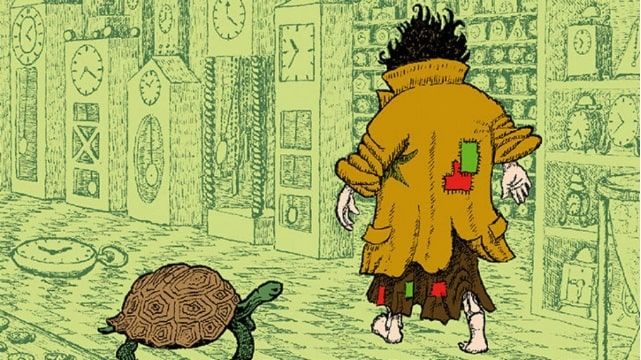Writing for children; from disenchantment to mysterious facts
For Michael Ende, what we call children's literature takes place on the stage of spontaneous play, where reality, as we know it, has no place.

In an exercise undertaken at the end of the 1980s, Michael Ende, one of the most famous German writers of the 20th century, renowned for his fantasy novels and considered an essential author of children's literature, asked himself, at the request of the organizers of a conference, "Why do I write for children?
Far from answering as it should be done to a question that was formulated from a single thought, Ende, by questioning himself, turns his question around, doubts it, and rethinks it by dismantling its absolute truths.
"I do not write for children," he answers, and argues that he does not produce his lyrics or choose his themes thinking about whether or not they are "relevant" for children or what he believes children should be; much less his texts are didactic or pedagogical, that is, they are not inscribed in a functional and pragmatic logic, of the instructional type.
The author of "The Neverending Story" opposes how critics use the category "children's literature" to underestimate a form of writing as if it were inferior literature relegated to a supposedly inferior public. On the contrary, Ende resists assuming these social imaginaries full of commonplaces, stereotypes, and prejudices, which have as a common denominator to be part of an adult-centric vision of the world.
Ende appeals to an "eternal youth", an element without which human beings cease to be human, namely the capacity of every person to wonder, to question, to feel emotion, to experience hope, suffering, and vulnerability. Characteristics that stand in contrast to the world of the ordinary and disenchantment, the gray and predictable world in which adults live.
"The most I can say is that I write books that I would have enjoyed reading as a child... The child I used to be lives on in me today and no gulf of maturity separates me from him... When we are no longer children at all, we are already dead," says the German writer.
And further on he indicates: "Throughout my life, I have resisted becoming what is known today as a well-adjusted adult, by which I mean those disenchanted, knowable, ordinary cripples who live in a disenchanted, knowable, ordinary world of so-called facts".
For Ende, what we call children's literature takes place on the stage of spontaneous play, where reality, as we know it, has no place. It is a free and unlimited space, a creative engine that produces mysterious facts and whose wonder is that when we appreciate them they appear as "unquestionably real".
According to Ende, children's literature is not suitable for those who unfortunately have a "low level of understanding", because it happens with unknown thoughts and ideas that combine magic, mystery, beauty, and humor, the key to artistic production of this author.
Momo
This is one of the most famous novels of the German writer Michael Ende published in 1973. It narrates the life of Momo, a girl who lives alone in the ruins of an ancient amphitheater in a forest. She has an extraordinary personality that inspires others and has led her to be appreciated and to develop close friendships in the village.
However, this beautiful routine of fun and friendly coexistence ends with the arrival of the gray men, strange beings who work for the TimeBank and whose mission is to urge people to save time and not waste it on "unimportant" things. Soon, Momo's friends and the other inhabitants of the village are affected by the ideas of these men, and their rhythms of life are modified to save time and not waste it on art, creativity, fun.
Life becomes gray, sterile, monotonous, and takes on an accelerated and hostile rhythm that does not allow for closer ties. Momo must find a way to put an end to the empire of the gray men, so she embarks on a journey in search of the source of time, and with the help of the turtle, Cassiopa will seek to restore time to her friends.




